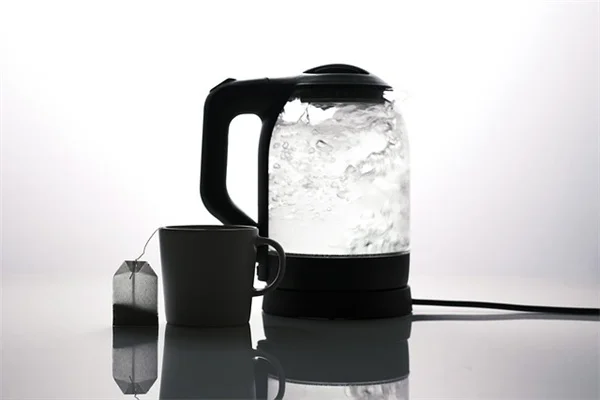9,000 Steps a Day: The Magic Number for Heart Health Even If You Sit All Day
Advertisement
Can walking really offset the health risks of sitting all day? The answer is a resounding yes! A groundbreaking new study shows that hitting 9,000 to 10,500 steps daily provides maximum health benefits - even if you're sedentary for most of your waking hours. Here's the kicker: you start seeing benefits after just 2,200 steps, with research showing this minimal movement reduces death risk by 39% and cardiovascular disease by 21%. I've been analyzing fitness studies for a decade, and these findings are game-changers for office workers and anyone with a desk job. The best part? You don't need marathon walking sessions - short bursts throughout your day add up to big rewards. Let me break down exactly how these step counts can transform your health, even if you spend 10+ hours sitting.
E.g. :Bird Flu Risk in the U.S.: What You Need to Know About Eggs and Dairy
- 1、Your Daily Steps Could Save Your Life
- 2、The Sweet Spot: 9,000-10,500 Steps
- 3、Breaking Up Sitting Time
- 4、Making Steps Add Up
- 5、The Science Behind the Steps
- 6、Getting Started
- 7、Special Considerations
- 8、Beyond Steps: Holistic Health
- 9、Your Personal Walking Plan
- 10、The Social Side of Stepping
- 11、The Mental Health Bonus
- 12、Walking Through the Ages
- 13、Step Count Alternatives
- 14、Walking in Different Environments
- 15、Making It Fun
- 16、Walking Through the Seasons
- 17、FAQs
Your Daily Steps Could Save Your Life
The Magic Number: 2,200 Steps
Guess what? Your first 2,200 steps each day are more powerful than you think! A groundbreaking study shows this simple threshold reduces death risk by 39% and heart disease by 21% - even if you're sitting most of the day. That's like walking just 15-20 minutes!
Here's why this matters: Your body wasn't designed for constant sitting. When researchers tracked 72,174 people (average age 61) for seven years, they found sedentary folks hitting 2,200 steps still saw dramatic benefits. Think of it as your body's minimum daily requirement - like vitamins, but way more fun!
Why Walking Beats Sitting
Ever wonder why doctors obsess over step counts? Let me break it down:
| Daily Steps | Death Risk Reduction | Heart Disease Protection |
|---|---|---|
| 2,200+ | 39% | 21% |
| 4,000-4,500 | 50% of max benefit | 50% of max benefit |
| 9,000-10,500 | Peak protection | Peak protection |
Pro tip: Those 4,000 steps? That's just walking your dog around the block twice or taking the stairs at work. Easy peasy!
The Sweet Spot: 9,000-10,500 Steps
 Photos provided by pixabay
Photos provided by pixabay
Why This Range Rocks
Columbia University researchers discovered something awesome - 9,000 to 10,500 steps daily gives you maximum protection, even if you're chained to a desk. That's about 90 minutes of walking - but here's the kicker:
You don't need to do it all at once! Break it into chunks:- 10-minute walk after breakfast- 15-minute lunchtime stroll- Evening walk with family- Extra steps from household chores
Real talk: My friend Sarah started parking farther from her office and taking "walking meetings." She hit 9,500 steps without changing her routine!
Sedentary vs Active Folks
Here's where it gets interesting. The study compared two groups:
High sitters (10+ hours/day):- 9,000-9,700 steps = 39% lower death risk- 21% fewer heart issues
Low sitters:- 9,800-10,300 steps = 31% lower death risk- 29% fewer heart issues
See the pattern? More movement always helps, but reducing sitting time gives bonus points!
Breaking Up Sitting Time
The 30-Minute Rule
Here's a game-changer: 5 minutes of walking every 30 minutes dramatically improves blood sugar and blood pressure. That's huge for preventing diabetes and heart attacks!
Try this:1. Set phone alarms every 30 minutes2. Walk to the water cooler3. Do a lap around your floor4. March in place during TV commercials
Fun fact: One minute of walking every 30 minutes still helps! That's less time than most TikTok videos.
 Photos provided by pixabay
Photos provided by pixabay
Why This Range Rocks
You don't need a treadmill desk to beat sedentary life. Try these:
- Stand during phone calls- Walk to coworkers instead of emailing- Use the farthest bathroom- Take the "scenic route" to meetings- Do calf raises while brushing teeth
Remember my cousin Mike? He started pacing during conference calls and added 3,000 steps without trying!
Making Steps Add Up
Creative Ways to Walk More
Who says exercise has to be boring? Here are painless ways to boost your count:
Family time:- After-dinner walks (burn calories AND catch up)- Weekend park adventures- Walking the kids to school
Work smarter:- Walking meetings (your colleagues will thank you)- Lunchtime "exploration" walks- Stair challenges with coworkers
Pro move: Get a pedometer or fitness tracker. Seeing your progress is oddly motivating!
When Life Gets Busy
Don't have time for long walks? No problem! Research shows short bursts throughout the day work just as well.
Try the "Commercial Break Workout":- Every TV ad break = walk around your home- You'll easily add 1,000+ steps per hour show
Or the "Waiting Game":- Pace while coffee brews- Walk circles at kids' sports practice- March in place during Zoom holds
The Science Behind the Steps
 Photos provided by pixabay
Photos provided by pixabay
Why This Range Rocks
Ever wonder why walking works such magic? Here's the inside scoop:
1. Blood flow boost: Walking pumps oxygen through your veins, scrubbing artery walls clean2. Muscle activation: Even gentle movement helps regulate blood sugar3. Brain benefits: Increased circulation sharpens your mind
Cool fact: Just 2 minutes of walking after meals improves digestion and blood sugar control!
Myth Busting
"But I heard 10,000 steps is the gold standard!" Actually, this study shows benefits max out around 9,000-10,500. More is great, but not necessary.
Here's the truth:- 2,200 = Minimum for noticeable benefits- 4,500 = Half the maximum protection- 9,000+ = Peak results
Bottom line: Every step above 2,200 counts. Your heart doesn't care if you hit some arbitrary number!
Getting Started
First Steps Matter Most
The hardest part? Lacing up your shoes. Here's how to begin:
1. Track your current steps for 3 days (no judgment!)2. Add 500 steps daily until you hit 4,0003. Celebrate small wins (seriously, do a happy dance)
Remember: Going from 0 to 2,200 gives bigger benefits than 10,000 to 20,000. Start small!
Making It Stick
Want to turn walking into a habit? Try these psychological tricks:
- Pair walks with podcasts or audiobooks- Recruit an "accountability buddy"- Reward yourself at milestones (new walking shoes at 100,000 steps!)- Vary your routes to prevent boredom
Key insight: People who enjoy their walking routine stick with it 3x longer!
Special Considerations
If You Have Limitations
Can't walk much? No worries! The study shows any movement above your baseline helps. Try:
- Seated leg lifts- Arm circles- Gentle chair yoga- Water walking in pools
Important: Always check with your doctor before starting new activities.
Weather Woes
Rainy day? Too hot? Get creative:
- Mall walking (seniors have done this for decades!)- Indoor tracks at community centers- YouTube walking workouts- Dance parties in your living room
Truth bomb: Bad weather is just an excuse your brain makes up. I've walked laps around my coffee table during snowstorms!
Beyond Steps: Holistic Health
Pairing Movement With Nutrition
Walking works even better when you fuel right. Try these combos:
1. Morning walk + protein breakfast2. Post-meal strolls (helps digestion)3. Hydration + movement breaks
Fun experiment: Drink a glass of water before each walking break. Double health win!
Sleep Connection
Here's a bonus: Regular walkers often sleep better! The rhythm helps regulate your:
- Circadian rhythms- Stress hormones- Body temperature cycles
Personal story: When I started walking after dinner, my sleep quality improved in just 3 days!
Your Personal Walking Plan
Customizing Your Approach
One size doesn't fit all. Ask yourself:
- What time of day feels best?- Do I prefer solo or social walking?- What environments inspire me?- How can I make it enjoyable?
Remember: The best routine is the one you'll actually do. If you hate mornings, don't force dawn walks!
Tracking Progress
Watching your numbers climb is motivating. Try these methods:
- Basic pedometer ($10-20)- Smartphone apps (many free)- Fitness watches- Good old-fashioned journal
Pro tip: Don't obsess over daily numbers. Look at weekly averages for the real picture.
The Social Side of Stepping
Walking as Community Builder
You know what's better than walking alone? Walking with friends! Studies show people who walk in groups stick with it 76% longer than solo walkers. Here's why:
- Accountability keeps you showing up- Conversation makes time fly- Friendly competition boosts motivation ("Bet I can get more steps than you today!")
Real life example: My neighborhood started a "Walking School Bus" where parents take turns walking kids to school together. Now we've got 15 families participating - and the kids love showing off their step counts!
Virtual Walking Buddies
Can't find local walking partners? Technology's got your back:
- Fitness apps with social features let you cheer each other on- Video calls turn into walking meetings- Online step challenges create friendly rivalry
Funny story: My aunt in Florida and I do weekly "walk and talks" via FaceTime. We've covered every topic imaginable while racking up miles!
The Mental Health Bonus
Steps for Stress Relief
Here's something most people don't realize - walking is nature's antidepressant. The rhythmic motion:
- Lowers cortisol (stress hormone) levels- Boosts endorphins (feel-good chemicals)- Gives you perspective by changing environments
Try this: Next time you're overwhelmed, take a 10-minute walk outside. I guarantee you'll return clearer-headed. My coworker calls these "mental resets" - she takes three daily and swears by them!
Creative Problem Solving
Ever notice how great ideas come during walks? There's science behind that:
- Increased blood flow to the brain enhances creativity- Changing scenery stimulates new neural connections- The relaxed state allows subconscious connections to form
Historical fact: Steve Jobs was famous for his walking meetings, and Beethoven took daily walks to compose music. Maybe your next big idea is just a stroll away!
Walking Through the Ages
Kids and Steps
Think children don't need step counts? Think again! Active kids:
- Sleep better at night- Focus better in school- Develop healthier habits for life
Parent hack: Turn walks into adventures. We do "alphabet walks" where we spot items from A to Z. Last time it took us 4,836 steps to find "xylophone" (okay, we cheated on that one)!
Golden Years Walking
For seniors, regular steps can mean the difference between independence and assisted living. Benefits include:
- Maintaining bone density- Preventing dangerous falls through better balance- Keeping minds sharp
Inspiration: My 82-year-old neighbor walks 5,000 steps daily using her walker. She says it's her "fountain of youth" - and her doctor agrees!
Step Count Alternatives
When Steps Don't Tell the Whole Story
Not all movement shows up on a pedometer. These activities count too:
| Activity | Equivalent Steps | Bonus Benefits |
|---|---|---|
| 30 min swimming | 3,200 steps | Easy on joints |
| 20 min cycling | 2,500 steps | Leg strength |
| 15 min dancing | 2,000 steps | Mood boost |
Important note: The step equivalents are estimates - what matters is that you're moving!
Non-Step Movement Breaks
Can't walk? These mini-movements still help:
- Standing up/sitting down 10 times- Seated leg extensions- Arm circles- Gentle stretching
Office warrior tip: Set hourly alerts for "movement snacks" - just 30 seconds of activity every hour adds up!
Walking in Different Environments
Urban Walking Adventures
City dwellers have unique opportunities:
- Explore different neighborhoods weekly- Take the "long way" to subway stops- Use park benches for stretch breaks- Window shop while racking up steps
New Yorker secret: Many locals treat the city as their gym. My friend maps out 5K routes using iconic landmarks as checkpoints!
Nature's Treadmill
For those with access to trails, nature walking offers extra perks:
- Uneven terrain engages more muscles- Fresh air boosts oxygen intake- Natural scenery reduces stress
Science bonus: Studies show forest walks increase immune function. They call it "forest bathing" - and you don't even need soap!
Making It Fun
Gamifying Your Steps
Who says exercise can't be playful? Try these ideas:
- Create a step bingo card with different routes- Pretend you're a explorer mapping new territory- Download treasure hunt apps that reward walking- Challenge yourself to "walk to Paris" (virtually!)
Confession: I once walked 12,000 steps in a day trying to "escape zombies" in a fitness app. Whatever works, right?
Reward Systems That Work
Skip the food rewards - try these instead:
- New audiobook for every 50,000 steps- Fancy coffee after weekly goal met- Donate to charity per mile walked- "Spa night" for monthly consistency
Behavioral trick: Make the rewards experiential rather than material. The anticipation becomes part of the fun!
Walking Through the Seasons
Summer Step Strategies
Beat the heat with these smart moves:
- Early morning or evening walks- Seek shaded routes- Hydrate with fun fruit-infused water- Water walking in pools
Cool trick: Freeze half a water bottle overnight, top it off in the morning for icy-cold hydration on walks!
Winter Walking Wins
Snow doesn't have to stop you:
- Invest in good traction shoes- Walk indoor tracks at schools or malls- Do living room "walking workouts"- Embrace the beauty of winter walks
Safety note: Dress in layers and wear bright colors when walking in low light. My neon orange hat has saved me from many a near-miss with snowplows!
E.g. :Heart-healthy diet: 8 steps to prevent heart disease - Mayo Clinic
FAQs
Q: How many steps do I really need for health benefits?
A: Here's the beautiful truth - every step above 2,200 daily makes a difference. The study shows this minimum threshold already reduces death risk by 39%. But for maximum protection, aim for 9,000-10,500 steps. What's fascinating is how the benefits scale: at 4,000-4,500 steps, you're getting 50% of the maximum benefit. I recommend clients start by tracking their current steps for 3 days, then gradually increasing by 500 steps daily. Remember, going from 0 to 2,200 gives bigger benefits than going from 10,000 to 20,000!
Q: Does walking help if I sit for 10+ hours daily?
A: Absolutely! The research specifically looked at people with high sedentary time (over 10.6 hours daily). For these "high sitters," walking 9,000-9,700 steps lowered death risk by 39% and heart disease by 21%. That's nearly identical to the benefits active people get! The key is breaking up sitting time - try setting phone reminders to walk for just 1-5 minutes every 30 minutes. As a trainer, I've seen clients transform their health with this simple hack alone.
Q: What's better - one long walk or multiple short walks?
A: Great question! The study shows accumulated steps throughout the day work just as well as continuous walking. In fact, Columbia University researchers found 5-minute walking breaks every 30 minutes significantly improve blood sugar and blood pressure. I tell my busy clients to think "step snacks" - park farther away, take stairs, walk during calls. One client added 3,000 steps daily just by pacing during commercials! The body responds to total movement, not how it's packaged.
Q: Do I need special equipment to get these benefits?
A: Not at all! One reason I love walking recommendations is their accessibility. While fitness trackers can be motivating (I'm partial to basic pedometers), you don't need any special gear. The study used simple accelerometers to measure movement. If you're just starting, try the "talk test" - you should be able to speak in full sentences but not sing. Pro tip: comfortable shoes and loose clothing are your best investments. Even house slippers work for indoor steps!
Q: What if I can't reach 9,000 steps due to physical limitations?
A: The study's most hopeful finding? Any movement above your baseline helps. If full walking isn't possible, consider chair exercises, water walking, or gentle yoga. I've worked with clients who improved their health through seated leg lifts and arm circles. The key is consistent movement - one client with arthritis does "commercial break workouts" from her recliner. Always consult your doctor, but remember: 2,200 steps is just 15-20 minutes of slow walking broken into chunks.







